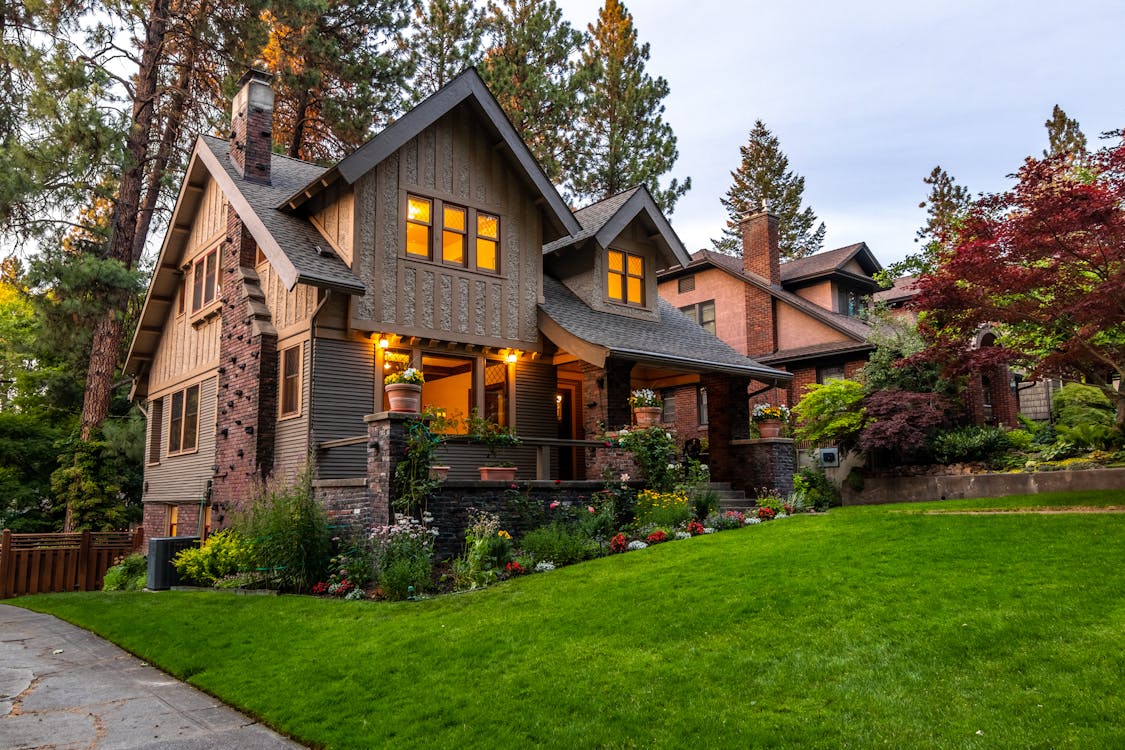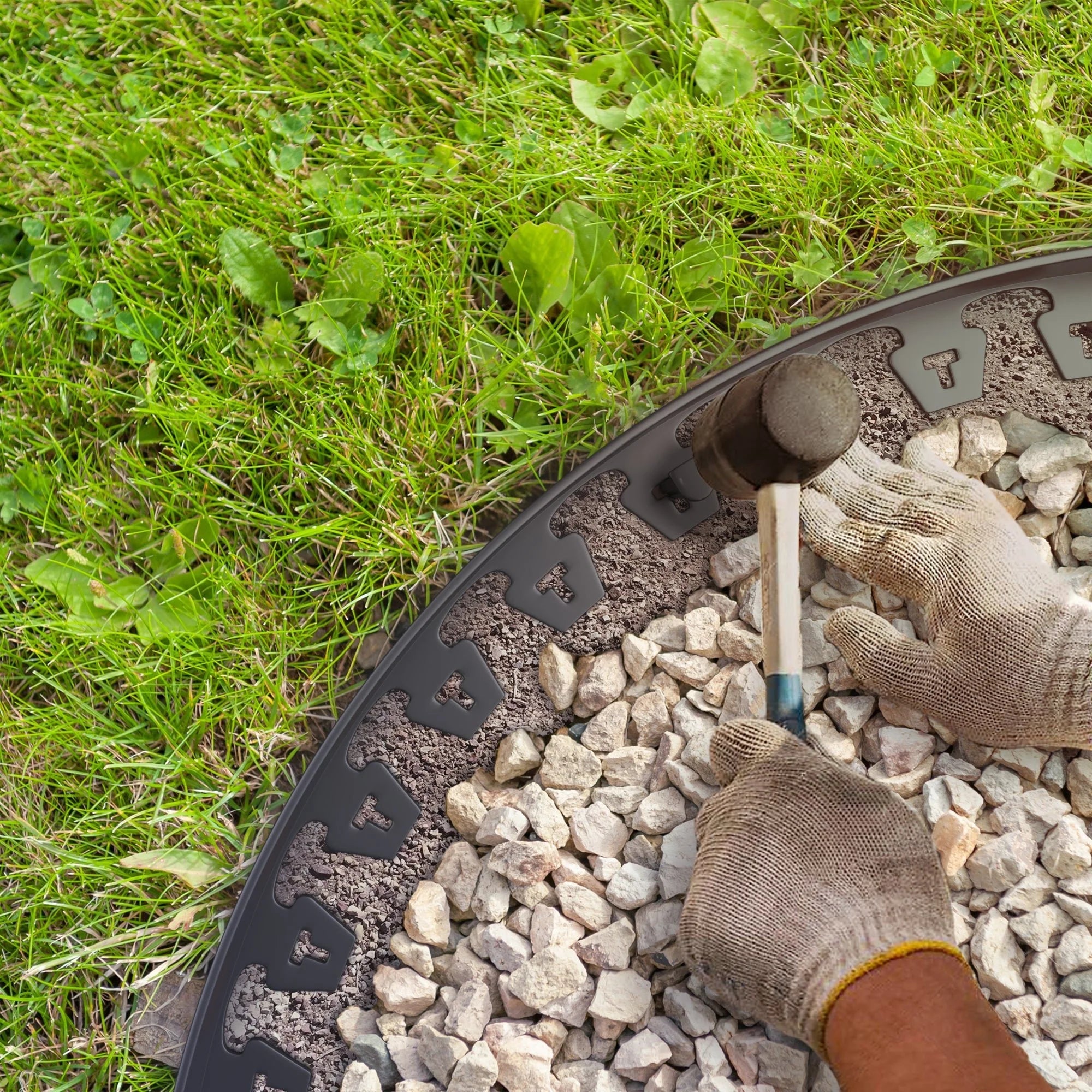Well-maintained garden beds are the foundation of any breathtaking garden. The secret to getting this look in your outdoor space is deceptively simple: neat and tidy garden bed edges. Obviously, there’s a lot more that goes into cultivating a lush garden, but by clearly defining the boundaries of your garden beds, you begin to create the essential conditions needed to grow a garden that will be the envy of your neighbors.
A garden with overgrown edges appears unruly and neglected, making even the most carefully planted areas look chaotic and unkempt. The overall aesthetic suffers, and the plants might, too. Invasive growth begins to compete for space and nutrients, and the lack of a crisp edge gives the garden a wild and disordered appearance.
In this guide, we will take you through the process of edging a garden bed, from basic to advanced techniques. Whether you’re a novice or an experienced gardener, this guide on how to edge a garden bed will give you some inspiration (and practical guidance) for achieving the best results.
Garden Edging Basics
Garden edging involves creating a defined line between your lawn and garden beds. Neatly edged flower beds and garden beds offers several benefits for property owners:
- Prevents Grass Encroachment: Keeps grass and weeds from invading garden beds.
- Defines Boundaries: Clearly delineates different areas of your garden, creating a neat appearance.
- Improves Aesthetics: Tidy flower bed edging creates a polished look, making your outdoor space more visually appealing.
- Reduces Maintenance: Helps maintain garden beds by preventing the spread of grass and weeds, reducing the need for frequent weeding.
Types of Garden Edging
- Natural Edging: Involves using a spade to create a simple, natural edge. This method is cost-effective, but it does not provide lasting results–significant maintenance may be required.
- Garden Border Edging Material: Purpose-built garden edging material from Vodaland is durable and offers a variety of design options to suit different garden styles or needs.
Essential Tools and Materials for Garden Edging
When it comes to basic tools for garden edging, a spade is ideal for creating natural edges, allowing you to dig out clean, well-defined lines. A half-moon edger can help achieve straight, precise edges, making the process smoother and more efficient. To ensure accuracy in your design, use a garden hose or string to mark the desired edge line before you start cutting.
For more advanced tools, a gas-powered or electric edger provides quick, precise edges, significantly reducing the labor involved. These tools are perfect for larger projects or for gardeners looking to save time while maintaining accuracy in their garden edging efforts.
Step-by-Step Guide to Basic Garden Edging
Planning the Edge
Before you start edging, plan the shape and layout of your garden bed. Consider whether you prefer curves or straight lines, as each offers a different visual impact. Curved edges provide a more natural look, while straight lines offer a formal, structured appearance.
Marking the Area
Use a garden hose or string to outline the desired edge line. This helps ensure accuracy and makes it easier to follow the planned design.
Cutting the Edge
- Using a Spade:
- Position the spade along the marked line.
- Step down onto the spade to dig out the sod, creating a clean edge.
- Remove the loosened sod to reveal a crisp, natural edge.
- Using a Half-Moon Edger:
- Position the edger along the marked line.
- Push down to create a straight edge.
- Follow the outline to complete the edge, removing any excess soil or grass.
Installing Edging Materials
To add durability and a polished look to your garden or flower beds, consider installing edging materials like bricks, stones, or metal. Start by digging a trench along the edge of your garden bed. Lay the bricks or stones in the trench, ensuring they are level and secure. Once positioned, backfill the trench with soil to stabilize the materials, providing a solid and attractive border that enhances the visual appeal of your garden.
For metal or plastic edging, position the material along the edge of your garden bed. Secure it in place with stakes or connectors to ensure it remains stable. Make sure the edging is flush with the ground to prevent tripping hazards and to maintain a neat, clean look. These materials offer flexibility and durability, making them ideal for creating long-lasting, well-defined garden edges.
Tips for Exotic and Specialty Gardens
For exotic gardens, consider the style and theme of your garden: in Japanese gardens, natural stones and bamboo create a serene, Zen-like edge that blends harmoniously with the landscape.
For cottage gardens, incorporating bricks or wooden logs can add a rustic, charming look that complements the garden’s traditional, cozy feel. Meanwhile, sleek metal or concrete edging is ideal for modern minimalist designs, providing clean lines and a contemporary aesthetic.
Incorporating unique materials can further enhance the distinctiveness of your garden edges. Using unconventional materials like glass, recycled objects, or specialty stones can create striking and personalized borders. These materials not only add a unique touch but also help reinforce the overall theme of your garden, making it stand out.
Trust Vodaland’s Terrain Solutions
We hope you found these tips helpful! With the right tools, materials, and approach, you can create clean, well-defined edges that make your garden beds stand out.
At Vodaland, we pride ourselves on offering top-tier terrain and landscape drainage solutions that cater to a wide range of landscaping needs. Our plastic landscape edging is not only versatile and easy to install but also provides a cost-effective way to create clean, defined garden borders. For those who need a more robust solution, our metal edging (stainless steel and aluminum) systems offer unmatched strength and longevity, ensuring that your garden edges stay pristine and well-maintained over time.



Leave a comment
This site is protected by hCaptcha and the hCaptcha Privacy Policy and Terms of Service apply.